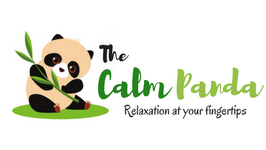We’ve all been there. A busy day at work and with million things swirling in our minds, we barely notice how tired our feet and legs tend to become.
It’s only when we get home do we start feeling the price of taking our feet for granted–and most of us just sleep on it. For some, however, the pain can be too much.
It’s like having barbed wires wrapped around our lower extremities, screaming at us to go find some relief.
The said ‘relief’ can be in the form of a foot and calf massager. But looking at the overwhelming number of products available, how are we supposed to choose?
This guide will show you how.

Benefits of foot and leg massage.
There are a lot of evidence, both anecdotal and research-based, to support how beneficial massage is to our health and well-being.
We’ve already outlined some of the benefits of foot massage, which include improved circulation and decreased stress, just to name a few. And if we are to be open-minded enough to embrace reflexology, then we can also use massage not only to relieve muscle tension but also to provide healing within our body.
READ: How To Give An Ahhh-mazing Reflexology Foot Massage
If foot massager is incredible enough, imagine what a foot and calf massager has to offer.
Susan Paul, an exercise physiologist, explains in an article for Runner’s World that by increasing blood circulation, massage can help runners “recover faster, prevent injuries, and improve performance.”
Researchers from the University of Illinois concur. Their study, published in the Archives of Physical Medicine and Rehabilitation, involved adult participants who all agreed to exercise their legs until they were sore. Those who received Swedish massage on their legs recovered faster and experienced less muscle soreness than those who didn’t receive any post-workout massage.
Foot and leg massage are not just for athletes. Even normal folks like you and me can use massage to soothe and rejuvenate our lower extremities. Foot and leg massagers are also good for those suffering from plantar fasciitis, diabetic neuropathy and even Restless Leg Syndrome.
How to choose the best foot and calf massager.
Here are basic things to consider before buying a foot or leg massager:
Heat or No Heat.
Some people prefer heat, while some people don’t. Ensure you have no condition (such as diabetes) that can make massagers with heat function potentially dangerous. Talk to your doctor first to determine whether it’s ok to use massagers with heat option or not.
Otherwise, it’s all a matter of personal preference. I suggest that you personally try the massage before buying it to make sure the quality of heat is up to your standards. If you don’t like the heat, there are a lot of products out there without this feature but just as incredible.
Size and Design.
Do you travel a lot? If so, then portability of the massager should be an issue. Foot and calf massagers are understandably bulkier and heavier than other products because they cover more body parts.
Therefore, if you’re always on the go and prefer to have a massager with you, I suggest to stick with the smaller and lighter foot massagers.
In terms of overall design, look for those that put more weight on user experience/ergonomics than flashy features. Some of the best products under this category have easy-grab handles, removable and washable cloth linings, adjustable tilt base and non-skid floor protectors.
Quality and Intensity of Massage.
Although nothing can beat the touch of a human therapist, there are foot and calf massagers that strive to replicate it. If possible, choose massagers that offer different massage settings. They should allow you to select the intensity of massage that is both relaxing and tolerable for you.
Lastly, most leg massagers tend to squeeze the calves in a way that restrict blood flow. As a result, the blood pools in your feet instead of returning to the heart.
Look for newer brands of foot and calf massagers that are designed to push the blood on your legs upward towards the heart. Not only does this mechanism helps improve blood circulation, but it also feeds your feet and legs with fresh blood, speeding up the healing process further.
